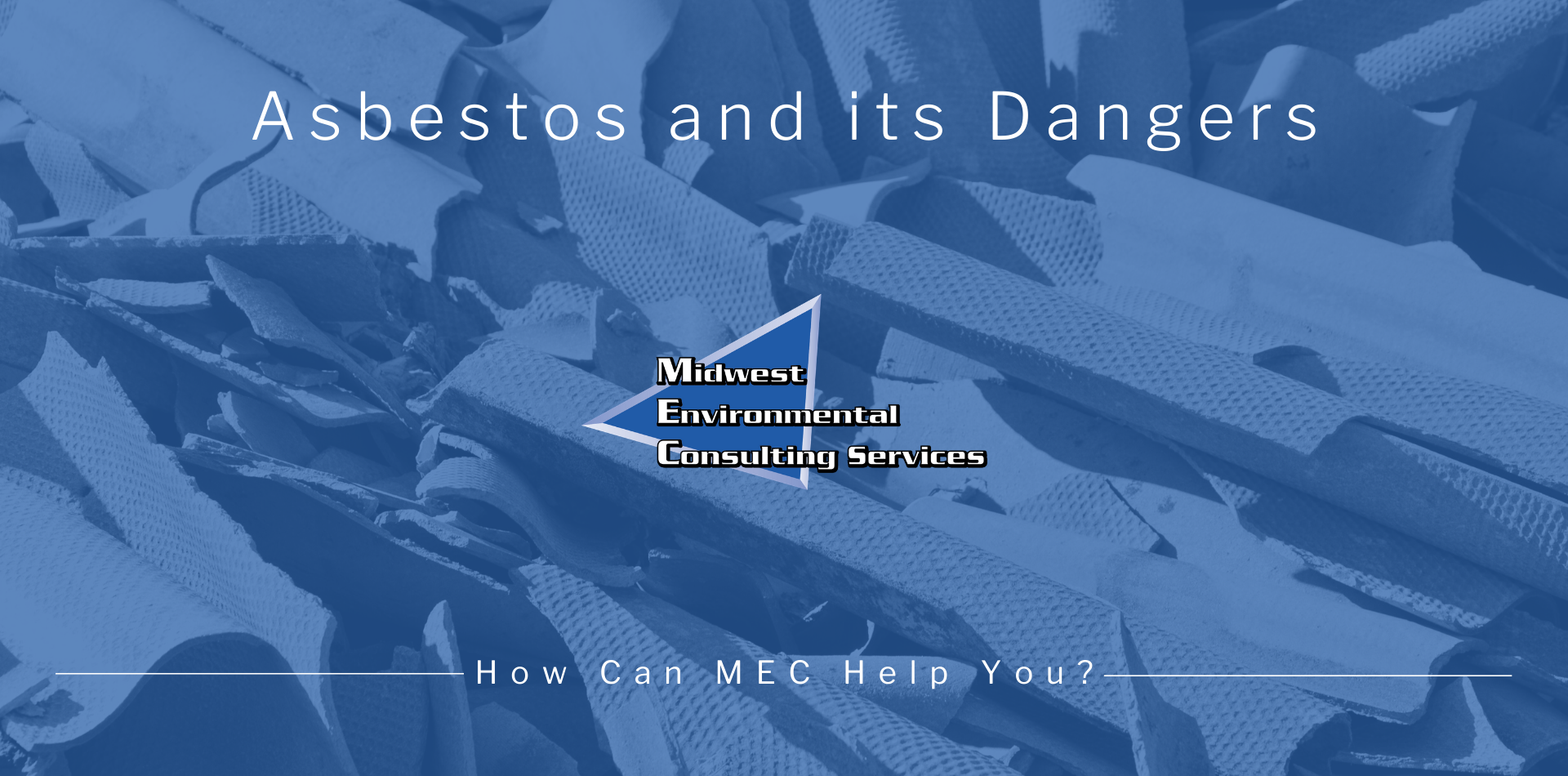Asbestos is a mineral that is highly resistant to fire, heat, and sound. For more than 50 years, it was used mainly in construction. The mineral is dangerous because if its fibers are swallowed or inhaled, it can cause deadly cancer called mesothelioma and other serious health conditions. Despite asbestos causing many thousands of illnesses and deaths, the United States has not banned it, although its use is restricted. It is still present in many locations, including ships and older buildings.
While asbestos is often used as a single reference, it is actually made up of several different minerals. These silicate and fibrous substances include anthophyllite, tremolite, chrysotile, crocidolite, actinolite, and amosite. The mineral structure is made up of thin and long fibers that pull apart with ease. Asbestos has been mined for many thousands of years because of its general strength, fire, and heat resistant properties, sound absorption qualities, and resistance to corrosive materials and electricity. It has always been widely available and very cost-effective. Despite being mined over the centuries, the mineral was not used in any large-scale manner until the late 19th century.
Asbestos Types
Asbestos has several different types, some of which are more dangerous than others. Chrysotile is often found in construction, presenting as a serpentine shape with long fibers that curl, making it useful for weaving into other materials and other applications.
It is sometimes called white asbestos because of its color. Crocidolite has a distinctive blue hue, and it is considered to be the most dangerous asbestos because it contains fibers that are sharp and very fine, making them easy to breathe in, causing health problems and internal damage. While crocidolite is used less often than chrysotile, it is still present in cement, insulation, and tiles, especially in the manufacture of ships.
Also known as brown asbestos, amosite is also quite harmful because of its sharp and tiny fibers. Approximately five percent of all construction in the United States utilizes brown asbestos.
In addition, asbestos can be divided into friable and non-friable types. These classifications do not reference the mineral types but refer to how they are actually used. The friable type crumbles and exposes its fibers. The non-friable asbestos does not crumble because it is encapsulated, making it safer to handle and use.
History of Asbestos Use in the U.S.
Since the late 19th century, asbestos has been in use in the United States. As many ships and buildings were constructed during the Industrial Revolution, asbestos was used extensively in cement for strength. It was also applied to fireproofing and insulation materials, especially on ships for protection from boilers and steam pipes.
It was also widely used for its sound-absorbing qualities. Asbestos use was restricted or banned in the United States in the early 1970s. This step was taken by several federal agencies, most notably the Environmental Protection Agency (EPA). In 1973, the EPA banned friable asbestos from being sprayed on insulation and fireproofing products. In the late 1980s, the EPA banned any material that contained asbestos, but in 1991, the Fifth Circuit Court of Appeals overturned the ban. Along with the EPA, the Consumer Product Safety Commission issued its own asbestos bans for wall patching compounds and fireplace materials.
Currently, asbestos is present in older floor and ceiling tiles, plastics, glues, brake shoes, coatings, paints, and gardening products.
Asbestos Use in the 21st Century
While the majority of industrialized countries do not allow the use of asbestos, the United States continues to allow it on a restricted basis in specific products. Some of the products that contain asbestos are listed below.
-Roof felt
-Automatic transmission components
-Vinyl floor tiles
-Cement pipes
-Corrugated cement sheets
-Roof coating
-Fireproof clothes
-Gaskets
-Millboard
-Disc brake pads and lining for drum brakes
Exposure to Asbestos
Asbestos exposure takes place when the small fibers separate, become dust, and are then swallowed or inhaled. Anyone who is in the same area of asbestos dust is at risk for exposure. Legal asbestos is required to have fibers encapsulated, making them non-friable and less likely to be released into the air, but there is still a potential for material damage that would allow asbestos to escape and become hazardous.
Being exposed to asbestos is dangerous because the fibers that are inhaled can hide in the lungs for years or even decades. Over time, this can result in chronic inflammation and damage to the lung tissue. The lungs are most susceptible to the effects of asbestos exposure. This is the reason why asbestos testing is so critical.
Various cancers and respiratory diseases are linked to asbestos exposure. This is because all types of asbestos are carcinogens that are harmful to humans, which means they often cause cancer after a person is exposed to them. Mesothelioma is an aggressive form of cancer that is rare but has a high death rate. Other cancers that may occur due to asbestos exposure include esophageal, throat, kidney, gallbladder, colorectal and gastrointestinal.
Mesothelioma
One type of cancer that has a definite link to asbestos exposure is mesothelioma. While it is not common, it is very deadly. The disease affects a tissue layer on the body’s organs called mesothelium. In most cases, mesothelioma affects the lungs, where asbestos fibers were inhaled many years earlier. The pleural lining surrounding the lungs is damaged by the disease. The testicles, the heart, and the abdomen can also be affected by mesothelioma.
The largest risk factor for developing mesothelioma is asbestos exposure. Not every person who is exposed will become ill. Even though this cancer is highly aggressive, it is often not detected until it is too late for treatment. Most people who are diagnosed with this form of cancer will die.
Asbestosis
Another serious lung illness connected to asbestos is asbestosis. It has both mild and severe forms that cause tightness in the chest, breathing difficulty, pain, and a chronic cough. The disease is progressive, causes scarring in the lungs, and there is no way to reverse it. There are medical treatments that ease breathing and give temporary relief from asbestosis, but it is not curable.
Additional Factors
Other than inhaling fibers, there are other risk factors that contribute to diseases caused by asbestos. If a person smokes, this will increase the chance of lung cancer. The length of exposure and the amount of asbestos involved also play key roles. If someone inhales a large amount of asbestos and is exposed over a long period of time, the more likely it is that disease will occur. It is also important to consider the type of asbestos. Brown and blue types present more risk than the white type. The genetics and general health of an individual matter as well.
Risk Factors for Illness After Asbestos Exposure
Any person who has been exposed to asbestos runs the risk of becoming ill. While it is not always of concern, those who spent time breathing in contaminated air have a much larger chance of getting sick. Repeated exposure over the course of many years often leads to asbestosis, mesothelioma, and other related illnesses, especially for those who worked in auto factories, shipbuilding, construction, firefighting, and other professions that involve asbestos materials.
The United States naval officers were exposed through being on ships, and first responders, as well as everyone in lower Manhattan, was exposed after the World Trade Center was attacked. Despite the September 11th exposure being relatively short-lived, there was a large amount of asbestos dust after the collapse that settled on everything in the area. This dust led to second-hand exposure when the workers went home to their families with the fibers on their clothes.
Currently, those who work as firefighters and EMTs are less likely to be exposed to asbestos because it is tightly regulated. There is still some risk even today because of older buildings and homes, and also remodeling projects that could lead to asbestos exposure.
In these cases, an asbestos abatement team can either encapsulate or remove the mineral completely. Rarely, it can be a better choice to simply leave the asbestos alone rather than trying to remove it and spreading dust around, which is dangerous.
Asbestos Exposure and the Law
The majority of people who become ill from mesothelioma or other diseases related to asbestos were unaware they had ever been exposed. Manufacturers of asbestos materials along with employers can be held liable for both the exposure and the resulting illness. Those who served in the military or worked a job that can be linked to asbestos exposure could be entitled to a financial settlement.
There are some businesses that were required to create trust funds in order to compensate victims of asbestos. Since mesothelioma is often not diagnosed for many years after the initial exposure, funds are set aside to pay for possible future claims. Anyone who was exposed to asbestos and can prove liability could be eligible to receive money from lawsuits, trust funds or settlements. Hiring an experienced attorney is helpful for exploring options and making a case.
Asbestos Consulting Services
Hiring an asbestos abatement company is the wisest and safest decision when it comes to removing asbestos from any residential, commercial, or public building. MEC offers limited and comprehensive sampling for minor and major renovations and demolitions. Our services include asbestos inspections, asbestos air testing, all the way through the completion of asbestos removal projects.
Whether it’s a commercial building, industrial building, or construction project, our licensed asbestos inspectors will create an easy-to-understand report of their findings. From there, we will develop an abatement plan that will safely remove the asbestos and keep your project on track. With over 25 years in the industry, we know the people to call and know what it takes to get your project done right. Give us a call today!




